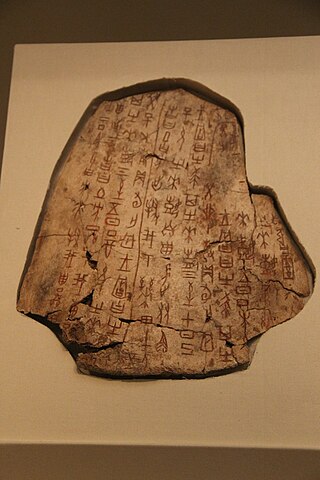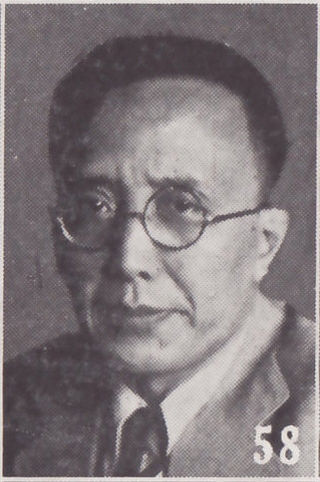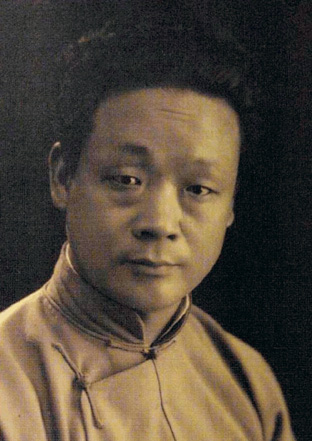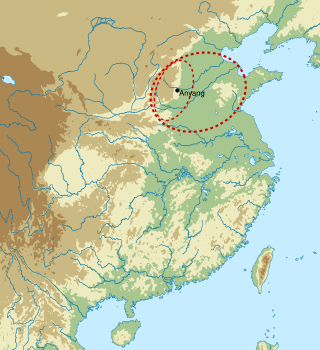
The Shang dynasty,also known as the Yin dynasty,was a Chinese royal dynasty that ruled in the Yellow River valley during the second millennium BC,traditionally succeeding the Xia dynasty and followed by the Western Zhou dynasty. The classic account of the Shang comes from texts such as the Book of Documents,Bamboo Annals and Shiji. Modern scholarship dates the dynasty between the 16th and 11th centuries BC,with more agreement surrounding the end date than beginning date.

Oracle bones are pieces of ox scapula and turtle plastron which were used in pyromancy –a form of divination –during the Late Shang period in ancient China. Scapulimancy is the specific term if ox scapulae were used for the divination,plastromancy if turtle plastrons were used. A recent count estimated that there were about 13,000 bones with a total of a little over 130,000 inscriptions in collections in China and some fourteen other countries.

Yinxu is a Chinese archeological site corresponding to Yin,the final capital of the Shang dynasty. Located in present-day Anyang,Henan,Yin served as the capital during the Late Shang period which spanned the reigns of 12 Shang kings and saw the emergence of oracle bone script,the earliest known Chinese writing. Along with oracle bone script and other material evidence for the Shang's existence,the site was forgotten for millennia. Its rediscovery in 1899 resulted from an investigation into oracle bones that were discovered being sold nearby. The rediscovery of Yinxu marked the beginning of decades of intensive excavation and study. It is one of China's oldest and largest archeological sites,and was selected by UNESCO as a World Heritage Site in 2006. Yinxu is located in northern Henan,near modern Anyang and the borders Henan shares with Hebei and Shanxi. Public access to the site is permitted.

Oracle bone script is the oldest attested form of written Chinese,dating to the late 2nd millennium BC. Inscriptions were made by carving characters into oracle bones,usually either the shoulder bones of oxen or the plastrons of turtles. The writings themselves mainly record the results of official divinations carried out on behalf of the Late Shang royal family. These divinations took the form of scapulimancy where the oracle bones were exposed to flames,creating patterns of cracks that were then subjected to interpretation. Both the prompt and interpretation were inscribed on the same piece of bone that had been used for the divination itself.

Guo Moruo,courtesy name Dingtang,was a Chinese author,poet,historian,archaeologist,and government official.

Wu Ding;personal name Zi Zhao (子昭),was a king of the Chinese Shang dynasty who ruled the central Yellow River valley c. 1250 BC –c. 1200 BC. He is the earliest figure in Chinese history mentioned in contemporary records. The annals of the Shang dynasty compiled by later historians were once thought to be little more than legends until oracle script inscriptions on bones dating from his reign were unearthed at the ruins of his capital Yin in 1899. Oracle bone inscriptions from his reign have been radiocarbon dated to 1254–1197 BC ±10 years,closely according with regnal dates derived by modern scholars from received texts,epigraphic evidence,and astronomical calculations.

Chinese calligraphy is the writing of Chinese characters as an art form,combining purely visual art and interpretation of the literary meaning. This type of expression has been widely practiced in China and has been generally held in high esteem across East Asia. Calligraphy is considered one of the four most-sought skills and hobbies of ancient Chinese literati,along with playing stringed musical instruments,the board game "Go",and painting. There are some general standardizations of the various styles of calligraphy in this tradition. Chinese calligraphy and ink and wash painting are closely related:they are accomplished using similar tools and techniques,and have a long history of shared artistry. Distinguishing features of Chinese painting and calligraphy include an emphasis on motion charged with dynamic life. According to Stanley-Baker,"Calligraphy is sheer life experienced through energy in motion that is registered as traces on silk or paper,with time and rhythm in shifting space its main ingredients." Calligraphy has also led to the development of many forms of art in China,including seal carving,ornate paperweights,and inkstones.
Beginning in the latter half of the 20th century,artifacts bearing markings dating to the Neolithic period have been unearthed at several archeological sites in China,mostly in the Yellow River valley. These symbols have been compared to the oracle bone script—the earliest known forms of Chinese characters,first attested c. 1200 BCE—and have been cited by some as evidence that Chinese writing has existed in some form for over six millennia. However,the Neolithic symbols have only been found in small numbers,and do not appear to go beyond pictorial techniques,as is required to obtain a true writing system representing spoken language.
David Noel Keightley was an American sinologist. He was a professor of Chinese history at the University of California,Berkeley,as well as a published author covering the Shang and Zhou dynasties and the Chinese Bronze Age. He was best known for his studies of Chinese oracle bones and oracle bone script. His work changed the way that many Sinologists viewed Shang dynasty history.

Shi Jinbo is a Chinese linguist and Tangutologist.

Qiu Xigui is a Chinese historian,palaeographer,and professor of Fudan University. His book Chinese Writing is considered the "single most influential study of Chinese palaeography".
Ken-ichi Takashima is,according to the editors of the Thesaurus Linguae Sinicae,"the world's leading authority on Shang dynasty oracle bone inscriptions".

Dong Zuobin or Tung Tso-pin (1895–1963) was a Chinese archaeologist. He was a leading authority on the oracle bone and turtle shell inscriptions of the Shang dynasty. In 1928,Dong supervised the first archaeological dig of Anyang,the Shang capital. Dong was a professor at National Taiwan University and director of the Institute of History and Philology at Academia Sinica from 1950 to 1954. Dong's construction of a Shang chronology was his most important research achievement.
James Mellon Menzies (明義士) was a Canadian Presbyterian missionary,archaeologist,professor,and author. He was the first Western scholar to study Shang dynasty Oracle bone script,the earliest form of Chinese writing. In the years following his death,he was considered a leading authority on the Shang dynasty.
Hu Houxuan was a Chinese historian,chief editor and a contributor of the Jiaguwen Heji Shiwen (甲骨文合集释文),the modern Chinese transcriptions of the most comprehensive collection of the oracle bone inscriptions. For 26 years,since 1956,he led the editorial team of the Jiaguwen Heji,a monumental collection of over 40,000 pieces of inscribed oracle bones and a milestone in the history of the oracle bone studies. Hu Houxuan was the mentor of Professor Qiu Xigui of Fudan University in China and a leading historian of the Institute of History of the Chinese Academy of Social Sciences.

The state religion of the Shang dynasty involved trained practitioners communicating with deities,including deceased ancestors and nature spirits. These deities formed a pantheon headed by the high god Di. Methods of communication with spirits included divinations inscribed on oracle bones and sacrifice of living beings. Much of what is known about Shang religion has been discovered through archaeological work at Yinxu –the site of Yin,the final Shang capital –among other sites. At Yinxu,artefacts such as oracle bones and ritual bronze vessels have been excavated. The earliest attested inscriptions were made c. 1250 BC,during the reign of King Wu Ding –though the attested script is fully mature,and is believed to have emerged significantly earlier.

The Shang dynasty of China,which adhered to a polytheistic religion centered around worshipping ancestors,structured itself into key religious roles with the king acting as head. As recorded on Shang oracle bones,royal adherents were grouped into specialist teams such as diviners,spirit mediums and those who conducted sacrifices. Outside of the capital area,lineages of Shang royal origins also developed religious activities resembling those of the central government.

The Shang dynasty of China practiced a spiritual religion that includes veneration of deceased royal ancestors. Shang ancestors were perceived to possess divine powers ranging from trivial matters to state-related affairs,and sometimes were interpreted as a component of the Shang supreme god Di. Towards the later years of the Shang dynasty,activities of ancestral veneration became increasingly frequent compared to those of supernatural deities. The Shang dynasty organized performance of ancestral rituals into a full year with 36 weeks,intended for all deceased members of the royal clan.

The Late Shang,also known as the Anyang period,is the earliest known literate civilization in China,spanning the reigns of the last nine kings of the Shang dynasty,beginning with Wu Ding in the second half of the 13th century BC and ending with the conquest of the Shang by the Zhou in the mid-11th century BC. The state is known from artifacts recovered from its capital at a site near Anyang now known as Yinxu and other sites across the North China Plain. One of the richest finds was the Tomb of Fu Hao at Yinxu,thought to belong to a consort of Wu Ding mentioned in Shang inscriptions.












